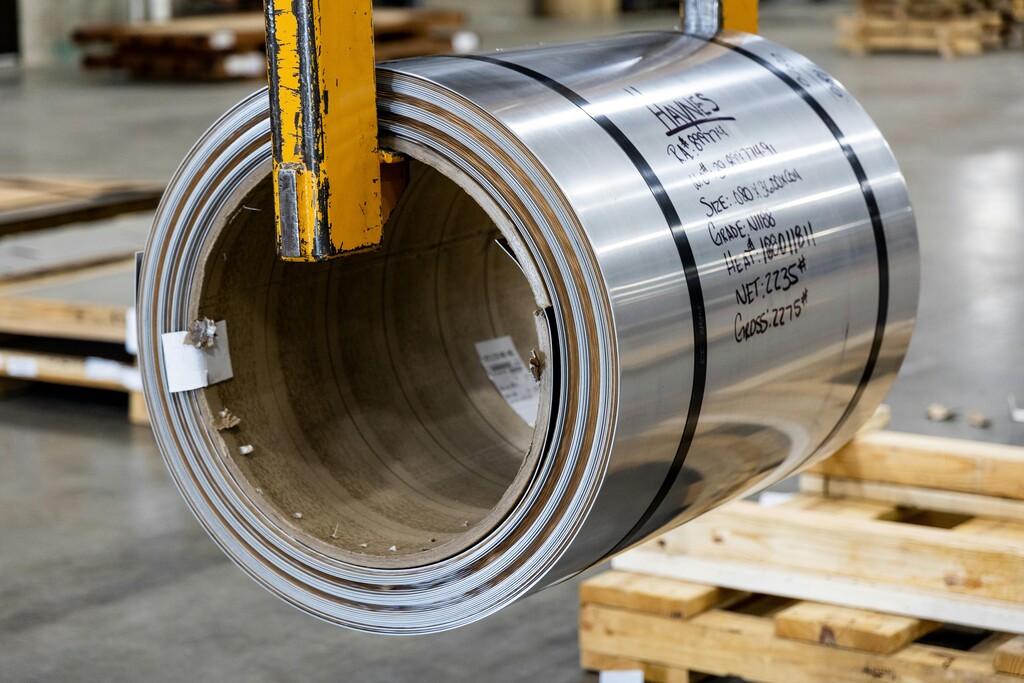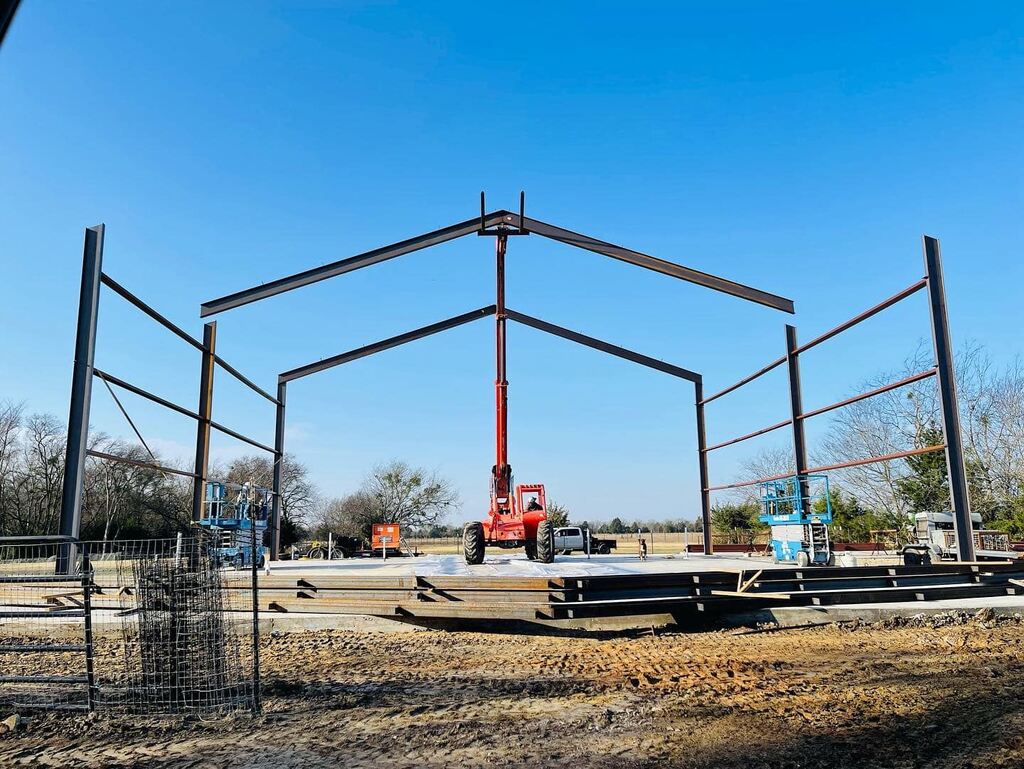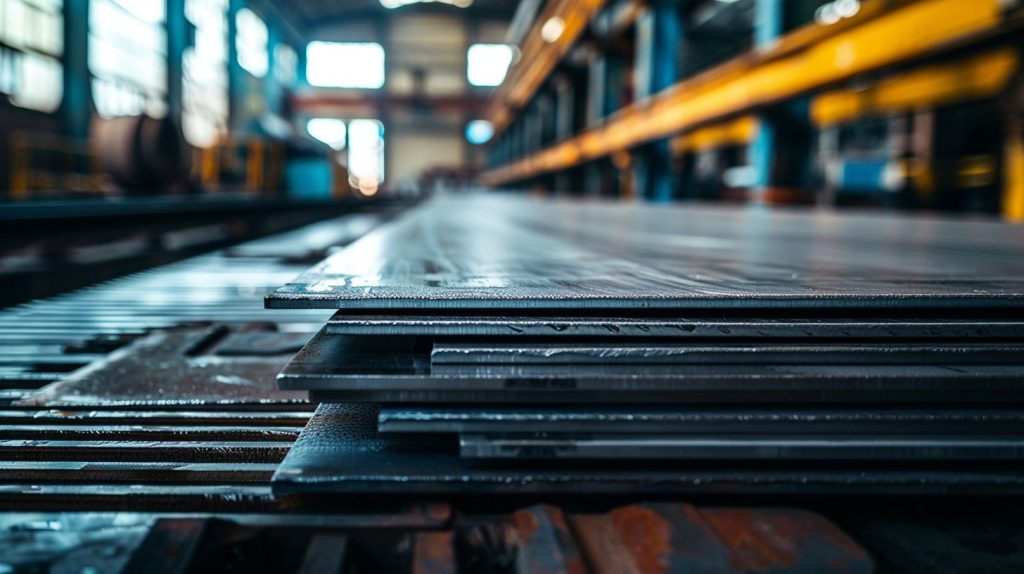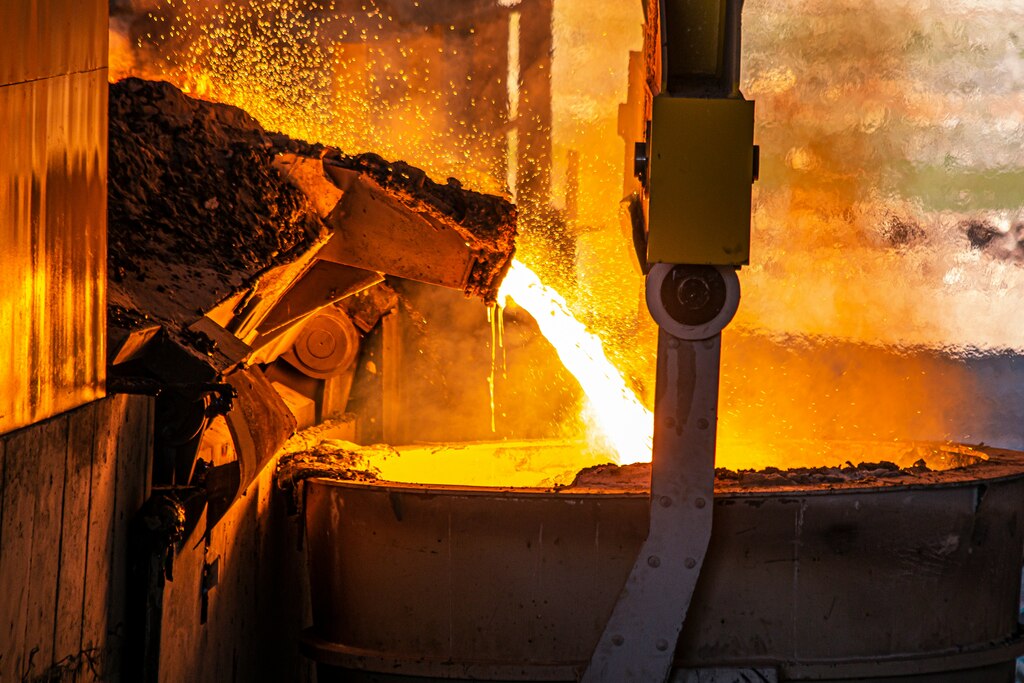
Deciding between hot rolled and cold rolled steel can be a real head-scratcher. This article will guide you through the maze of choosing the right type of steel for your project. Dive in and discover how to make that choice with confidence!
Table of Contents
Understanding Hot Rolled Steel
Hot rolled steel comes to life in the intense heat of rolling mills, where it’s shaped with a malleability essential for some of the toughest jobs. From skyscrapers embracing the clouds to railroad tracks enduring relentless loads, this is where strength meets flexibility, ready for real-world action.
Characteristics and Advantages
Hot rolled steel comes out of the mill process at high temperatures. According to Endura Steel, this method gives it a blue-gray scale finish and makes it malleable. Because of this, manufacturers can shape hot rolled steels into large sizes like railroad tracks and i-beams, making them a strong fit for structural components. They have lower material strength right after rolling but gain toughness over time.
One key advantage is that hot rolling typically costs less than cold rolling. Hot rolled sheets are perfect for jobs that don’t need exact shapes or tight dimensional tolerances. Reliance Foundry states that their easy production means they’re widely available, helping to keep prices down in the steel industry. Even with slight distortions from shrinkage as they cool, these pieces offer good ductility – which means they bend well without breaking under tension.
Applications of Hot Rolled Steel
Hot rolled steel bends and shapes easily because of its high-temperature rolling process. This makes it a go-to material for large structures where finish and precision are less critical.
- Construction projects like barndominiums and pole barns often use hot rolled steel for building frames and beams.
- Roadways and railroad tracks use hot rolled steel to make durable rails.
- Metal art sculptures benefit from the material’s malleability.
- Industrial equipment such as conveyor belts rely on the strength of hot rolled steel.
- Due to its toughness, structural components for ships and trucks are often made out of this type of steel.
- Large agricultural implements are built using hot rolled steel for robustness against daily wear and tear.
- Hot rolled bars serve as the foundation for forging items like gears and crankshafts in automotive manufacturing.

Exploring Cold Rolled Steel
Delve into the realm of cold rolled steel, where the precision of tighter tolerances and a smooth surface finish elevate this material beyond its hot-rolled cousin. Discover how meticulous processing transforms steel into versatile forms that cater to intricate design needs while enhancing durability.
Distinctive Features and Benefits
Cold rolled steel stands out with its smooth surface and greater strength. Its tight tolerances make it a top choice for precision work. The process involves rollers at room temperature to achieve better dimensions and finer surface finish. According to Chesterfield Steel, cold rolled steel ends up stronger—up to 20%—compared to its hot rolled counterpart because of these steps.
Receive Quotes from Multiple Barndominium Builders & Kit Providers Near You Today (It's Free!)
Fill in this 1-minute form below and receive estimates for your project without having to find them yourself! Let them do the work.
This type of steel shines in roles that need exact measurements and exceptional surfaces. You’ll find it in car parts, household appliances, and sleek metal furniture. It’s also a go-to material for the aerospace industry, where each millimeter counts. Cold rolled steel not only meets the high standards for aesthetic appeal but helps ensure products are robust and last longer.
Usage of Cold Rolled Steel
Cold rolled steel boasts more strength and improved surface finishes, making it ideal for specific uses. It stands out in projects that demand precision and endurance.
- Home appliances often rely on cold rolled steel for its sleek surface and durability. Think refrigerators, washers, and dryers—each one needs the steel to be strong yet easy on the eyes.
- Using cold rolled steel in metal furniture allows for intricate designs and stability. Desks and filing cabinets require this mix of form and function.
- The automotive industry values cold rolled steel for parts such as panels, frames, and wheels. These components benefit from the material’s high strength-to-weight ratio.
- Aerospace applications include structural elements of aircraft which endure extreme stress. Here, cold rolled steel provides the necessary toughness without adding too much weight.
- Precision engineering fields choose cold rolled steel when making complex machinery parts. Its fine tolerance ensures that every gear or bearing works just right.

Hot Rolled vs. Cold Rolled Steel: Key Differences
Diving into the core of what sets these two apart, hot rolled vs cold rolled steel are distinguished by their respective manufacturing processes—each has a unique impact on the final product’s structure and properties. This fundamental contrast influences everything from malleability to strength, carving out specialized niches for each type in the vast world of steel applications.
Physical and Mechanical Properties
Understanding the physical and mechanical properties of hot rolled and cold rolled steel is crucial when deciding which type to use for a project. Let’s take a closer look at how these two processes impact the characteristics of the finished product.
| Property | Hot Rolled Steel | Cold Rolled Steel |
| Strength | Good | Up to 20% stronger due to work hardening |
| Surface Finish | Slightly rough texture | Smooth and often shiny finish |
| Dimensional Tolerances | Standard tolerance | Closer tolerance due to less shrinkage |
| Edge Quality | Rounded edges | Sharper and more precise edges |
| Scaling | Presence of scale due to high-temperature processing | Little to no scale due to processing at room temperature |
| Workability | Easier to work with due to lower strength | Harder to form and bend |
This comparison table highlights the essential contrasts between hot rolled and cold rolled steel properties. Each type offers a unique set of characteristics, making them suitable for different applications in the industry.
Cost and Availability
Hot rolled steel is the more budget-friendly option. It comes with lower costs because its processing doesn’t involve tight tolerance or high strength. Mills produce it in large quantities, which helps keep the price down. You can find hot rolled steel at metal supermarkets and most suppliers without trouble.
Cold rolled steel is pricier due to its additional handling and processing steps, like annealing and cold drawing, which enhance its strength and finish. While these features improve performance, cold rolled steel is less available than its hot-rolled counterpart. Manufacturers might have longer lead times for orders of this material because production is less widespread.
Making the Right Choice: Factors to Consider

Picking between hot and cold rolled steel is a big deal. You must think about your project’s needs carefully. Cost matters, but it’s not the only thing to keep in mind. Think about what you’re making and how strong or smooth you need the metal to be. Hot rolled steel is cheaper and easier to shape, so use it for bigger, less detailed projects like pole barn homes and shouses.
Metal Supermarkets advises that if precision is essential, like in car parts or machines, go for cold rolled steel. It’s stronger due to its intense processing through cold reduction mills and tension breaking. This type of steel also has a smoother surface because it gets cleaned up after rolling. So, look at the price tag and your end goal before deciding which one to buy. Choose hot rolled if saving money comes first; pick cold rolled when details can’t be compromised.
Conclusion
Choosing between hot rolled and cold rolled steel comes down to your project needs. Hot rolled is easier on the wallet and works great for less fussy jobs. Cold rolled offers strength and a polished look when details matter. Consider your budget, desired appearance, and structural requirements before you decide. Both types have their place in construction and manufacturing – it’s all about the right fit for the task at hand. For more information on building solutions made of steel, such as pole barn cabins, metal garages, and shipping container homes, follow our Facebook Page, browse our website and join us on Pinterest.

